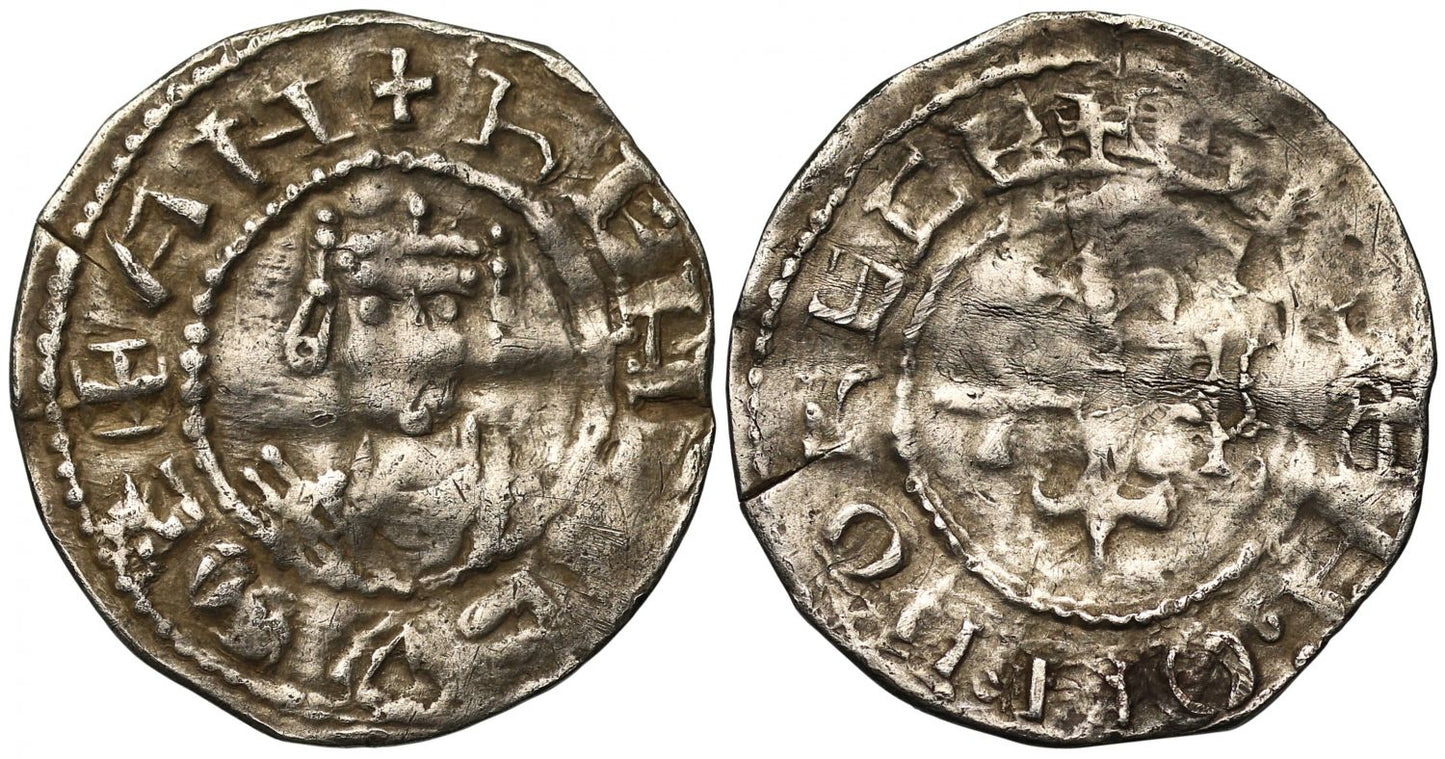FAQs
What makes a coin valuable?
I have coins to sell, what’s the next step?
How will my purchases be shipped?
What happens if I’m not entirely happy with my purchase?
Henry I Penny, facing bust / cross fleury, Dorchester Mint, moneyer Sween
Henry I (1100-35),silver Penny, facing bust / cross fleury type (c.1117), Dorchester Mint, moneyer Sween, crowned facing bust within beaded inner circle, legend and outer beaded border surrounding, +hENRICV REX AN, rev.annulet at centre of cross fleury within inner beaded circle, legend and outer beaded border surrounding, +SPEEN ON DORECE, weight 1.22g (SCBI -; Allen, BNJ 2016, p.179, fig. 23a; BMC type X; N.866; S.1271).Once cleaned, creased and straightened with associated surface marks, otherwise well centred, very fine and extremely rare.
The legends translate as "Henry King of the English" on obverse and "Sween of Dorchester" on the reverse.
North records just two moneyers working at Dorchester for Henry I but only in the later types 12-14 inclusive, therefore this is likely the earliest coin of Sween.
The fourth son of William the Conqueror, the "fine scholar" Henry Beauclerc as he was known acceded to the throne of England on the death of his childless elder brother William Rufus, who died after a hunting accident in the New Forest on 2ndAugust 1100. Well educated Henry had been left landless when his Father died with the Kingdoms shared between the two eldest surviving brothers Robert and William, though he did purchase the county of Cotentin from his eldest brother Robert in western Normandy, but was later deposed from there in 1091, and subsequently, gradually rebuilt his power there with the help of elder brother William against Robert. Upon the death of William Rufus, and being present in the area at that time, he immediately became King promising to correct the less popular policies of his late brother. Henry married Matilda of Scotland with whom he had a son William Aethling and a daughter the Empress Matilda, as well as various other illegitimate children. His elder brother Robert invaded in 1101 disputing Henry's control, but this was settled by a pact recognising Henry as King of England. Henry later invaded Normandy in 1105 and 1106 defeating Robert eventually in the Battle of Tinchebray imprisoning his brother until his death on 3rdFebruary 1134 in Cardiff Castle. Henry then controlled Normandy for which he was subsequently challenged by Robert's son William Clito who was supported by Fulk V of Anjou, Baldwin VII of Flanders and Louis VI of France, resulting in major rebellions within the Duchy from 1116-19. Eventually a peace settlement was agreed in 1120 after Henry's victory at the Battle of Bremule.
Henry was an effective leader who drew his nobles and barons close whilst using the government justice and taxation systems to the best effect boosting the Royal Exchequer, along with Normandy and its own independent system. He also encouraged ecclesiastical reform playing a major role in selecting senior clergy, though he did have a serious earlier dispute with Archbishop Anselm of Canterbury in 1101 eventually resolved through a compromise in 1105. Unfortunately, Henry's son and heir apparent William drowned in the White Ship sinking disaster of 1120 and Henry entered a second marriage in the hope of another son, but the union with Adeliza of Louvain remained childless. He therefore declared Matilda his heir and married her to Geoffrey of Anjou in 1128 but the relationship between them all became strained with fighting along the Anjou border. Henry subsequently died on 1stDecember 1135 after a week of illness and despite his plan for succession it was Stephen of Blois his nephew that succeeded him which led to a Civil War.
Situated in Dorset on the River From some six miles north of Weymouth, a Royal house was in use here at the time of Aethelstan, with a castle later on in the 12-13thCenturies. Minting activity occurs from the reign of Aethelred II to Baronial civil unrest in the time of King Stephen and there is a die link with Warminster in the reign of Edward the Confessor.
Provenance:
Ex Dix Noonan and Webb, Auction 138, 11th December 2016, lot 2174.
FAQs
What makes a coin valuable?
I have coins to sell, what’s the next step?
How will my purchases be shipped?
What happens if I’m not entirely happy with my purchase?













